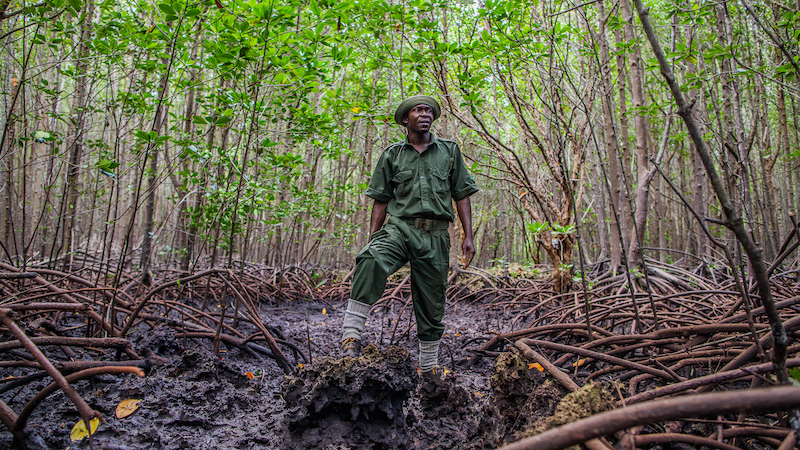A new global fund supporting the protection of nature in developing countries has been launched, but questions remain over how it will be financed.
The Global Biodiversity Framework Fund (GBFF) aims to help countries reach the nature protection targets set by the breakthrough Kunming-Montreal biodiversity deal signed last year.
The fund, which will contribute to the goal of protecting 30% of the world’s land and water ecosystems by 2030, has been set up by the Global Environmental Facility (GEF), a multilateral financial partnership.
Cooking the books: cookstove offsets produce millions of fake emission cuts
Its 185 member countries officially approved the creation of the financial mechanism at the GEF’s meeting in Vancouver, Canada, on Thursday.
At the opening plenary, Canada and the United Kingdom announced initial contributions of C$200m ($147.3m) and £10m ($12.6m) respectively.
Small initial contributions
Ahmed Hussen, Canada’s international development minister, said his government is making “a significant contribution” to this new fund, which “will play a key role in addressing biodiversity loss”.
To light applause, the UK’s nature minister Trudy Harrison told the GEF assembly that the money is “a downpayment” which will “ensure that the fund is open for business as quickly as possible”.
She said that the UK was “deep in its current fiscal cycle” which “limits its ability for financial manoeuvre” but “we look forward to making further payments in future”.

Carlos Manuel Rodríguez, CEO of the GEF (left) opens the Assembly meeting alongside Canada’s Steven Guilbeault and Ahmed Hussen. Photo: IISD/ENB | Angeles Estrada
The fund needs at least $200m from three donors or more before December to get up and running, according to GEF rules. Japan, the USA and others have indicated they will support the fund, but haven’t committed any money yet.
After this start-up phase, however, the fund will have to attract much more substantial resources if it wants to fulfill the “game-changing” role its creators touted.
Rich countries obligation
As the main mechanism to deliver the Kunming-Montreal deal, it is expected to ramp up financial support for protecting nature.
Governments agreed last December to mobilize at least $200 billion a year from a variety of sources including public and private finance and philanthropies.
Soy, beef and gold gangsters: Why Bolivia and Venezuela won’t protect the Amazon
The biodiversity fund is set up to draw in money from all of those actors, but initially, the bulk of the capital should come from the public purses of wealthy nations.
At the COP15 biodiversity summit, developed countries agreed to provide at least $20 billion a year by 2025 and $30 billion by 2030.
Michael Degnan from the Campaign for Nature advocacy group told Climate Home News that the target has to be achieved if countries are serious about making biodiversity conservation a priority.
“Launching the fund is a really important first step – but it’s only half of the equation,” he added. “The next step is for donor countries to outline their plans.”
Funding compromise
The make-up of the new biodiversity fund was one of the major sticking points during negotiations last year. Many Latin American and African countries had pushed to create a new financial mechanism separate from the GEF.
The issue came to a head on the final day of the talks when the negotiator from the Democratic Republic of the Congo (DRC) appeared to block the final deal, telling the plenary that they could not support the agreement in its current form because it did not create a new fund for biodiversity. But minutes later the meeting’s chair brought down the gavel, effectively overruling the objection.
The final text put the GEF in charge of creating the new fund in 2023 and running it until at least 2030.
Juliette Landry from think-tank IDDRI thinks this was a “rational compromise”. “It would have been hard to create out of nothing a new fund that has a relatively short implementation period”, she added, “but there is still room to improve procedures within the GEF”.
Some developing countries have called for a “simplified process” to access the money during Thursday’s opening session. The representative from the DRC said the fund “must be accessible to all”.
Indigenous communities role
The GEF’s historical top recipients – China, Brazil and Indonesia – are expected to receive the lion’s share of the money, experts told Climate Home News.
But the GEF says a third of the resources will go to least developed countries and small island states, while as much as 20% of the fund should support Indigenous-led initiatives.
“Indigenous communities with their generations of land stewardship and fire management expertise hold the key to preventing catastrophic wildfire and other environmental contingencies,” said Dario Jose Mejia Montalvo, chair of the UN permanent forum on Indigenous Issues. “Yet, despite their unparalleled understanding, they continue to be overfunded and overlooked”.
This is an opportunity to rectify that, he added.

The Indigenous Peoples press conference following the launch of the new biodiversity fund. Photo: IISD/ENB | Angeles Estrada
Midori Paxton, head of biodiversity at the United Nations Development Programme (UNDP), hopes the new fund will change the attitude of politicians and business leaders towards financing nature protection.
“It sends a signal that biodiversity loss and deterioration of nature is a critical global issue”, she told Climate Home. “We often hear ‘we are busy with climate, nature can wait’, as if they are totally separate things”.
But the biodiversity and climate crisis are very much interlinked, Paxton added.
